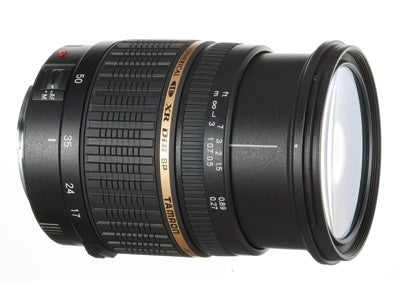Tamron was quick to take up the digital optimisation mantle; constantly updating its range as well as adding new lenses into the line-up....
Tamron 17-50mm f/2.8 XR DI 11 LD (IF) Review
Tamron was quick to take up the digital optimisation mantle; constantly updating its range as well as adding new lenses into the line-up. Among its technologies is the use of a pair of hybrid aspheric lenses for optimal optical performance, as well as to compress the optical train and maintain a compact size. Other glass used in the construction includes XR, or Extra Refractive Index glass and Low Dispersion glass.
The lens also has multi-layer coatings on ordinary elements and Internal Surface Coatings on the surfaces of plural elements to reduce internal reflections and flare.
Other features include the continuous maximum f/2.8 aperture and a zoom lock to prevent the front zoom extracting in carriage.
Build and handling
To keep it light and compact, most of the outer construction is plastic, except for the metal lens mount. The zoom ring is not quite as smooth as we’d like; there’s a little more resistance in the action at the wide angle end. But it’s hardly cause for concern. The AF is linked to the motor at all times in AF mode, so you have to switch to MF for manual focusing. The Tamron doesn’t have a high-end AF motor, but it’s still fairly quiet and quick.
Image Quality
At both ends of the focal range there’s very little resolution fall-off, or image fall-off from centre to corner, while resolution is excellent, especially at 17mm. Fringing is also well handled, but at 17mm, it rises slightly above some other lenses in this category, except the Pentax. However it rarely goes beyond a 2 pixel rise, mainly staying at 1-1.5 pixels. At 50mm the CA is much better, especially from f/8 to f/22, which combined with the resolution makes the sweet spot around f/8 for ultimate image quality.
Verdict
Outstanding optical performance is spoiled slightly by some increase in fringing at the wide end, but generally this is a very capable and handy optic, with a decent price, especially for Nikon, Canon and Sony users. Overall, it’s a very good option





